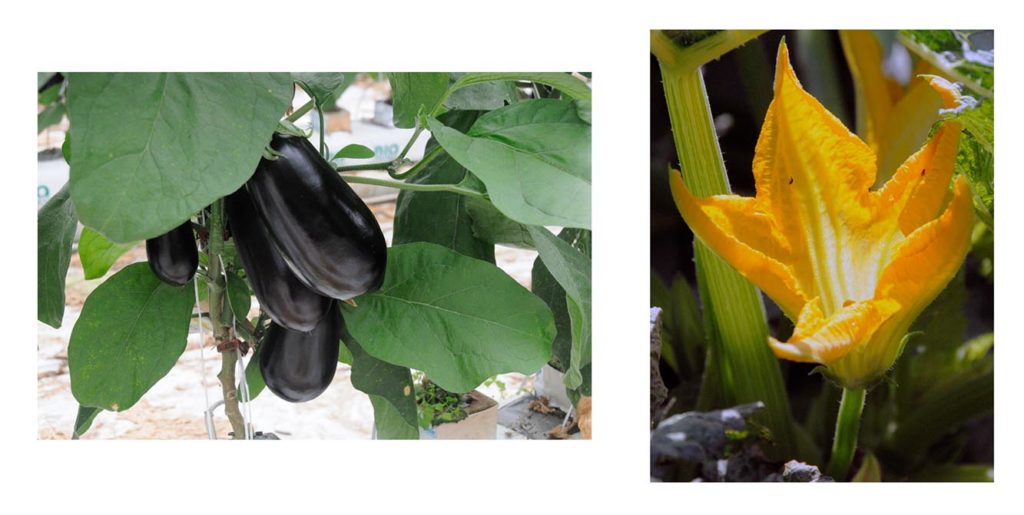By Juan Carlos Díaz Pérez
The microbiological revolution in agricultural sciences may benefit crop production uniquely. We are only starting to understand these complex interactions among crops, microorganisms, insects and other organisms.

Plant diseases are relatively rare despite plants being exposed to numerous and diverse microorganisms. A myriad of microorganisms (bacteria and fungi) live on the surface of plants’ leaves, fruits, stems and roots without causing disease. These microorganisms influence plant growth and plant health of vegetable crops. Plant-surface beneficial microorganisms may produce antibiotics and compete with pathogens for nutrients.
A microorganism must cross plant barriers, such as the plant cuticle, to cause plant disease. The cuticle is an impermeable film containing fats and waxes, protecting plants from pathogens and excessive water loss. The plant cuticle covers the plant surface. Although several fungi and all bacteria penetrate plants through natural openings, some pathogens penetrate plants through wounds in the plant epidermis. The plant cuticle can be physically damaged by cultural practices (manipulation, cultivation or spraying), by sand-blasting from wind erosion and by soil splashing.
In conventional vegetable production, growers typically apply pesticides to manage the populations of pathogens, insects and weeds. However, pesticide applications usually result in the unintended killing of microorganisms and insects that do not harm the crops. Pesticides, surfactants, spreaders, soaps and sticking agents can eliminate or disrupt these beneficial microorganisms, weakening the plant’s defenses against pathogens. Spray adjuvants may disrupt the cuticle’s waxes, favoring plant diseases like botrytis rot in grapes.
MICROORGANISMS AND COVER CROPS
Cover crops provide many benefits, such as reduced soil erosion and improved soil quality. Cover crops can also diminish infestations by pathogens, insects, weeds and nematodes. Thus, growers may require fewer pesticides with cover crops, reducing input costs, chemical exposure and environmental impact. Cover crops can support plants’ natural protection by decreasing the need for synthetic crop-protection materials. The plant surfaces of cover crops can sustain healthy populations of beneficial microorganisms that can migrate from the cover crop onto the cash crop after planting or transplanting.
Growers can utilize cover crops to strengthen the protection provided by the plant cuticle. In minimum-till or no-till crop systems with cover crops, growers may not require cultivation for weed control, and spraying can be minimized. Organic mulches and cover crop residues reduce soil erosion and soil splashing, thus protecting plants from cuticle injury.
Integrating cover crops with no-till systems has reduced damping-off incidence in South Georgia. Studies show that increasing soil organic matter may help decrease plant disease incidence and severity by enhancing natural disease suppression. The use of cover crops alone may not be sufficient or may require several years to reduce the populations of soil pathogens.
In Maine, using oats, broccoli, white lupine and field peas as cover crops reduced the damage by potato stem rot (Rhizoctonia solani) in three years. In Idaho, sudangrass as green manure reduced the impact of verticillium wilt by 24%, and tuber yield increased by 24% to 38% in potatoes.
MICROBIAL AMENDMENTS
Microbial amendments can be applied to the soil or foliage to improve the quantity and diversity of microbial populations in a crop. Microbial amendments include using one or more species of mycorrhizal fungi, the fungi Trichoderma and bacteria such as Rhizobium and Bacillus. The plant-microbial interactions are complex and strongly influenced by the air and soil environments. The field crop responses to the use of microbial amendments have been variable.
Novel molecular analysis, such as DNA technologies, allow growers to determine the current status of soil microbial communities (pathogens and not pathogens) in their fields and how particular cultural practices and pest control strategies influence the soil microbial communities. Research is actively developing on this topic.
Juan Carlos Díaz-Pérez is a professor at the University of Georgia in Tifton.









